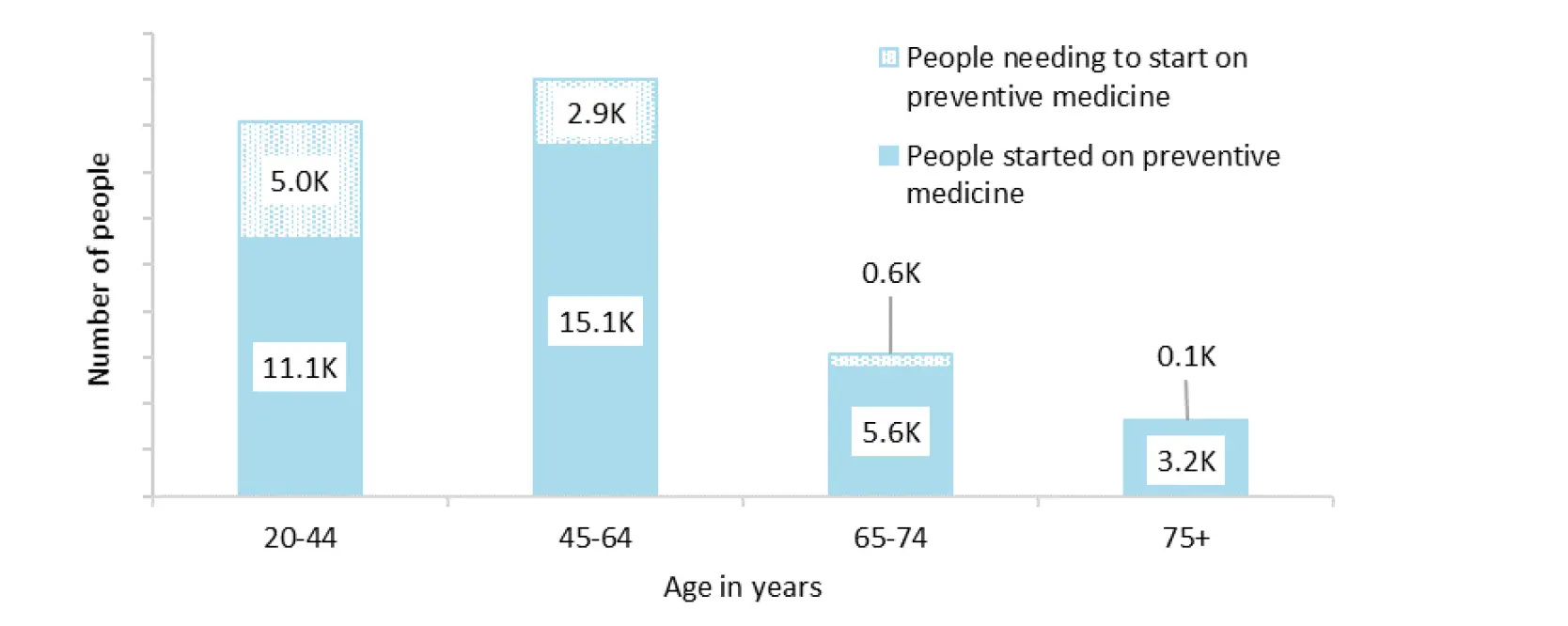Pacific peoples health – Gout data insights
Pharmac has published this report to empower positive action and change for equitable access to preventive gout medicines for Pacific peoples.
We hope the data and insights in this report support people in the decisions they make to improve the management of gout, and enhance the well-being of Pacific peoples.
Read the media release about this report
More Pacific peoples need preventive gout medicine each year
Gout’s prevalence among Pacific peoples continues to climb, while access to preventive gout medicine remains inequitable.
Overall, an estimated 8,700 more Pacific peoples need preventive gout medicine each year to achieve equity of access to medicines. Additionally, more Pacific people need to start these medicines at a younger age.

Pacific peoples start being dispensed preventive gout medicine 13 years earlier than non-Māori, non-Pacific peoples. They are also about three times more likely to be dispensed gout-specific medicine compared to non-Māori, non-Pacific peoples.
Despite this, Pacific peoples are 13.8 times more likely to be hospitalised with a primary diagnosis of gout, compared with non-Māori, non-Pacific peoples. And nearly half (47%) of Pacific peoples hospitalised for gout had not received preventive gout medicine in the six months before their hospitalisation (in 2018/19).
Understanding gout
Gout is the most common form of arthritis in New Zealand. It is a life-long condition that can reduce someone’s life expectancy and quality of life. However, with access to preventive medicine, people can manage the symptoms and risk of complications.
Biological factors – such as kidney disease, genetic variants, and some medicines – mean Pacific peoples are about three times as likely to live with gout, compared to non‑Māori, non-Pacific peoples.
In addition, Pacific peoples are more likely to live with both gout and other long-term conditions, such as type 2 diabetes, than non-Māori, non-Pacific peoples. These complications increase the burden of disease for Pacific peoples.
Building the medicine access equity monitoring and outcomes framework
This is Te Pātaka Whaioranga Pharmac’s second report into medicine access inequities for gout, following Gout insights – Impact on Māori.
These reports are part of our medicine access equity monitoring and outcomes framework that measures trends in medicine access inequities for our priority conditions and priority populations.
The framework and insights will be useful across the health and disability sector and Pacific communities, including health practitioners, health workers, policy makers, researchers, and groups who have an interest in addressing the health needs of Pacific peoples.
Resources to help manage gout
He Ako Hiringa resources for health care professionals
These gout insights helped inform these resources.
Beyond medicines for gout [long read](external link)
Let's talk gout (part 1) [podcast](external link)
Let's talk gout (part 2 [podcast](external link)
Let's talk gout [video](external link)
Beyond unreasonable gout [HAH Bulletin](external link)
Gout resource repository(external link)
For people with gout
Gout resources: Healthify(external link)
Gout – Health NZ | Te Whatu Ora(external link)
More data
Atlas of Healthcare Variation: Gout – HQSC website(external link)


